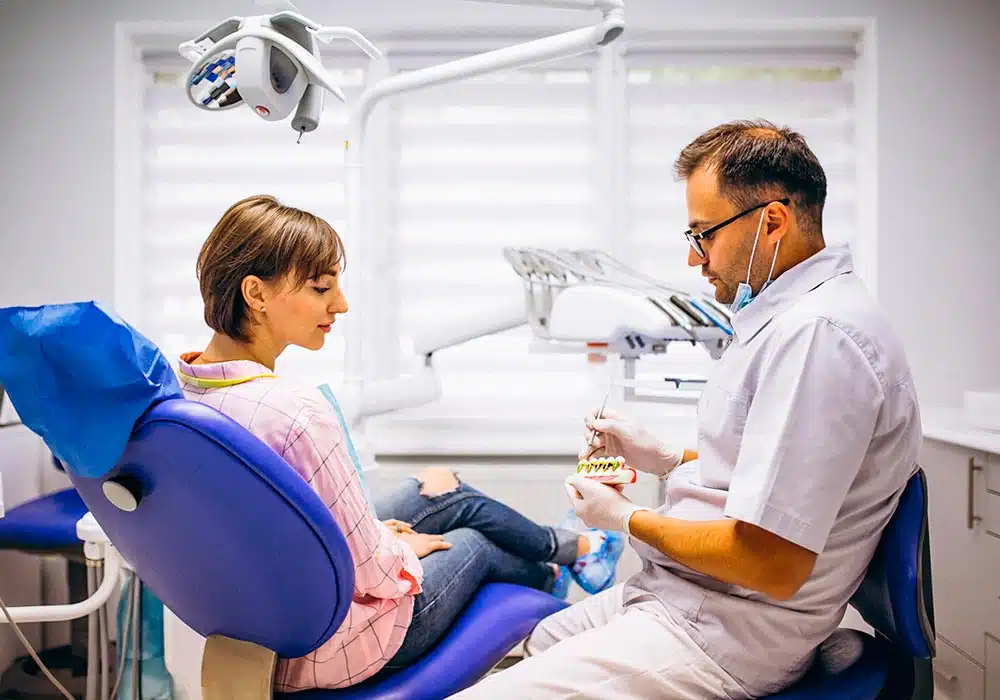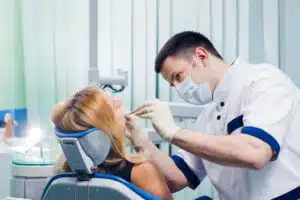
https://www.hdortho.com/Ever wondered what the role of an orthodontist really is and why so many people, from teens to adults, visit them? An orthodontist does more than just straighten teeth—they help create smiles that look and feel better, while also improving how we bite, chew, and even speak.
Orthodontic care isn’t only about getting braces or clear aligners; it’s about making sure your teeth and jaw work together comfortably and healthily. By keeping your teeth aligned, an orthodontist helps prevent bigger issues down the road, like tooth decay, gum problems, and even jaw pain.
Think of it this way: an orthodontist’s work supports your overall health and confidence. Whether you’re considering braces, aligners, or just curious about what they do, learning more about the role of an orthodontist can help you understand why their expertise is essential for a lasting, healthy smile.
What is an Orthodontist?
Have you ever wondered who exactly is responsible for those life-changing braces that straighten crooked teeth and bring out confident smiles? This is where orthodontists come in. The role of an orthodontist is to specialize in diagnosing, preventing, and treating dental alignment problems. They don’t just work on teeth; they focus on the entire structure of your mouth, helping ensure that your bite, jaw, and teeth align for optimal function and appearance.
Orthodontics has come a long way as a specialty within dentistry. What started as a focus on simply aligning teeth has grown to include understanding complex issues with jaw alignment, facial structure, and bite correction. Now, orthodontists use advanced tools and techniques to address these problems more effectively than ever.
While dentists handle general oral health, like cavities and cleanings, orthodontists focus specifically on straightening teeth and fixing alignment issues. Both work together to support your overall oral health, but the expertise of an orthodontist is what you need if you want a straighter, healthier smile.
Education and Training of an Orthodontist
The path to becoming an orthodontist is rigorous. First, a person must complete dental school, which takes about four years. After that, they enter an orthodontic residency program that adds another two to three years of specialized training. This additional schooling allows orthodontists to master the skills needed to diagnose, prevent, and treat alignment problems.
Beyond schooling, orthodontists may also complete board certifications and ongoing education courses to stay updated on new techniques and technology. Their deep knowledge and training are what set them apart as experts in straightening teeth and perfecting smiles. The role of an orthodontist, then, is built on years of training, ensuring they’re ready to handle even the most complex alignment issues.
When and Why You Should See an Orthodontist
So, how do you know if you need an orthodontist? Many people first see an orthodontist because of obvious issues like crooked teeth, crowded teeth, or bite problems. Other reasons to visit include gaps between teeth, an overbite or underbite, or any other alignment concerns. An orthodontist can help diagnose and treat these issues to improve not just your smile but also the way your mouth functions.
Early visits to an orthodontist can make a big difference, which is why the American Association of Orthodontists recommends children have their first visit by age seven. At this age, an orthodontist can spot potential issues early on and sometimes prevent them from becoming bigger problems. But it’s never too late—many adults also see orthodontists to fix long-standing issues or enhance their smiles.
Seeing an orthodontist early can help avoid complications like tooth decay, gum problems, or even jaw pain later in life. The role of an orthodontist goes beyond creating straight smiles; it’s also about making sure your teeth and jaws work well together, supporting overall oral health and giving you confidence in your smile.
Common Orthodontic Conditions and Issues Treated
Orthodontists treat a variety of common dental issues. Some of the most frequent problems include:
- Overbite and Underbite: An overbite occurs when the upper teeth overlap the lower teeth too much, while an underbite is when the lower teeth are too far forward. Both conditions can cause issues with chewing and speaking, and they can wear down the teeth.
- Crossbite and Open Bite: A crossbite is when some upper teeth sit inside the lower teeth instead of outside. An open bite is when the upper and lower teeth don’t meet in the front. These can lead to jaw discomfort and other oral health issues.
- Crowded Teeth and Gaps: When teeth are too close together, it’s hard to clean between them, leading to decay. On the other hand, gaps between teeth can also create hygiene challenges. Orthodontists can align teeth for both functional and aesthetic improvements.
Through a thorough examination, including x-rays and sometimes digital scans, orthodontists can assess these and other issues, making personalized treatment plans that address each person’s specific needs.
Types of Orthodontic Treatments
The role of an orthodontist includes offering various treatment options tailored to each patient. Here’s a look at some of the most common treatments:
- Braces: Braces are the most well-known treatment for straightening teeth. Traditional metal braces use brackets, wires, and bands to gently shift teeth into alignment. While they are more noticeable, metal braces are effective and commonly used for more complex alignment issues. There are also ceramic braces, which work similarly but are less visible, as they blend in with the teeth’s color.
- Clear Aligners (e.g., Invisalign): Clear aligners are a popular alternative to braces, especially for adults and teens. These removable, nearly invisible trays work by gradually shifting the teeth over time. Aligners offer the flexibility of being taken out while eating or brushing, making them convenient and easy to clean.
- Retainers: Retainers are used after braces or aligners to hold teeth in their new positions. Retainers come in different types, such as fixed or removable, and help ensure that teeth stay aligned long-term.
- Palate Expanders: For children with narrow palates, an expander can help create more space in the mouth. This appliance gently widens the upper jaw over time, helping correct bite issues and making space for incoming adult teeth without needing extractions.
Orthodontists guide patients through each stage of treatment, helping them choose the best option for their unique needs.
The Treatment Process: What to Expect
Starting orthodontic treatment begins with a consultation. During this visit, the orthodontist will take x-rays, photos, and sometimes digital scans to get a full picture of your dental alignment. From there, they’ll develop a personalized treatment plan tailored to your needs.
Once treatment begins, expect periodic check-ups for adjustments and progress tracking. These appointments allow the orthodontist to make any necessary changes to keep treatment on track. The role of an orthodontist is to monitor progress and ensure that the treatment is as effective and comfortable as possible.
Life with Braces or Aligners
Living with braces or aligners may require a few adjustments in daily routines. With braces, it’s important to avoid sticky, hard, or chewy foods that could damage the brackets and wires. For aligners, remember to remove them when eating or drinking anything other than water and to clean them regularly to avoid staining.
Good oral hygiene is essential with both braces and aligners. Brushing and flossing around braces or aligners keeps teeth and gums healthy, which is key to successful treatment.
Aftercare: Retainers and Maintaining Results
Once your braces or aligners come off, retainers are essential. These custom-fit devices keep teeth in place, preventing them from shifting back to their original positions. Orthodontists usually provide specific instructions on when and how to wear retainers, such as during sleep.
Following the orthodontist’s instructions for retainer use is crucial for maintaining your newly aligned smile. With proper care and regular check-ups, you can enjoy the benefits of orthodontic treatment for years to come.
Benefits of Orthodontic Treatment Beyond Straight Teeth
Orthodontic treatment improves more than just your appearance. A properly aligned bite helps with clear speech and effective chewing, which supports overall digestion and comfort. The confidence boost that comes from a straight smile can be life-changing, impacting social interactions and self-esteem.
Final Thoughts
The role of an orthodontist goes beyond just aligning teeth. They’re dedicated to creating functional, beautiful smiles that boost both health and confidence. If you’re facing alignment or bite concerns, consulting an orthodontist can open up options to improve your smile and oral health. Investing in orthodontic care is a step toward better health, comfort, and a smile that lasts.
Ready to Transform Your Smile?
If you’re considering orthodontic treatment to improve your smile and oral health, now’s the perfect time to take the next step. Consult with a skilled orthodontist to explore the best options for you. Visit Hilton Diminick Orthodontics to schedule a consultation and get started on your journey to a healthier, more confident smile!





 Camp Hill, PA
Camp Hill, PA